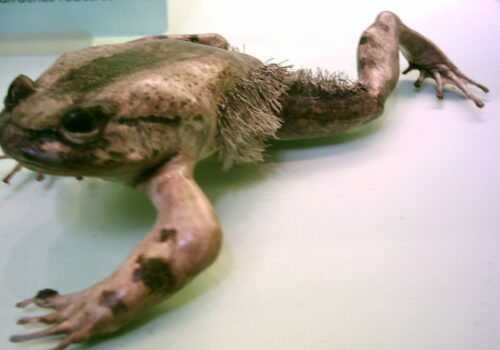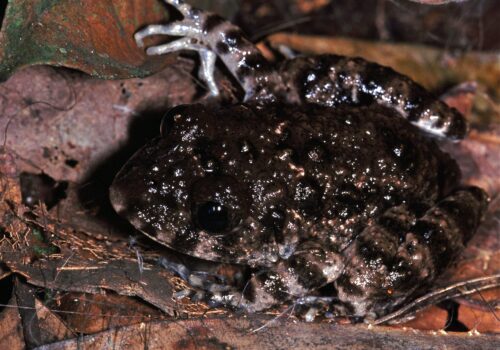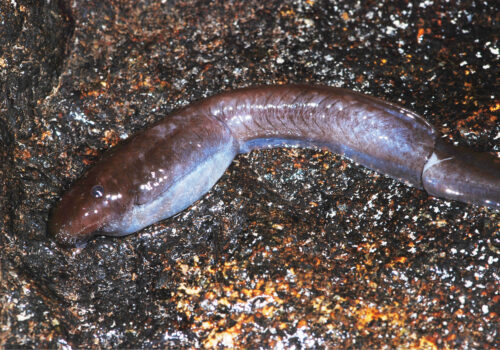Leptopelis palmatus: The Enigmatic Tree Frog of West Africa’s Forests#
Deep within the lush rainforests of West Africa, tucked among emerald leaves and rich earth, lives a creature small in stature yet immense in ecological significance—the palm forest tree frog, scientifically known as Leptopelis palmatus. This elusive and captivating amphibian, though often overlooked due to its cryptic behavior, serves as an indispensable component of its rainforest home, weaving a subtle yet essential thread through the fabric of ecological balance in the region.
Known for their hauntingly melodious calls that permeate humid nights, these frogs have intrigued naturalists and captivated indigenous communities for generations. Yet, despite their charm, surprisingly little is widely known about their unique lives, behaviors, and the fragile habitats on which they depend. To glimpse their fascinating world is to discover a narrative rich with adaptation, intrigue, and a compelling imperative for conservation.
Taxonomy and Classification#
Leptopelis palmatus belongs to the diverse frog family Arthroleptidae, which comprises various tree-dwelling amphibians native mainly to Sub-Saharan Africa. Within this family, the genus Leptopelis stands out for its remarkable adaptability, vivid appearance, and distinctive vocalizations, which vary dramatically across species and habitats.
The genus name “Leptopelis” comes from Greek, meaning “slender foot,” a nod to their distinctive anatomy adapted for an arboreal lifestyle. Leptopelis palmatus, identified and first described scientifically by Peters in 1868, showcases many of the unique characteristics emblematic of its genus. It is closely related to other members of the genus, such as Leptopelis hyloides and Leptopelis spiritusnoctis, but distinguished clearly by its habitat preferences, subtle physical traits, and unique vocalizations.
Natural Habitat#
Leptopelis palmatus thrives predominantly within West Africa’s coastal rainforests, with confirmed populations inhabiting areas in Ghana, Ivory Coast, Guinea, Liberia, Sierra Leone, and possibly other neighboring nations. This frog demonstrates clear affinity for humid forest ecosystems, often residing close to slow-moving freshwater streams, dense foliage clusters, and lush, forested valleys rich in leaf litter.
The species predominantly frequents mid- to lower-level forest vegetation, demonstrating an adaptability enabling it to blend seamlessly into its densely vegetated surroundings. Much of its life unfolds unseen on tree trunks, within vines, under broad tropical leaves, and in the moist shelter of shaded ecosystems. Precisely because of this intricate reliance on specific habitats, the frog serves as a sensitive biological indicator, signaling environmental health or distress well before more visible species experience threats.
The Symphony of the Forest: Communication and Environmental Interaction#
A tropical rainforest is never silent; comes twilight, it becomes alive with a chorus of insect hums, rustling leaves, and amphibian calls. Among this cacophony, Leptopelis palmatus lends its distinctive voice, a series of melodic notes rich in tone, echoing resonantly through the night air. Its call not only serves reproductive purposes but also establishes territories and transmits crucial social information between individuals.
Remarkably adaptive, these frogs conduct their vocal performances from elevated positions, making use of natural amplifiers such as hollow tree trunks, densely-packed foliage, and other acoustic structures that exist within their densely-forested world. Thus, their vocalizations represent the intimate interplay of biology, behavior, and environment.
Physical Characteristics#
When seen clearly—which itself is a considerable challenge due to excellent camouflage—Leptopelis palmatus presents a striking sight. Adults typically reach approximately 35 to 50 millimeters—a modest size, yet their presence and ecological impact drastically exceed their physical stature.
Observing one closely reveals an enchanting mixture of natural greens, earthy browns, and delicate hues of creams or yellows, perfectly adapted to the verdant mosaic of their rainforest home. The skin texture of this frog is mildly granular, providing an extraordinary ability to merge visually with mossy branches and leaf debris, a critical defense strategy during daylight hours when predators roam the forest floor and mid-canopy.
True to their name, their digits feature expansive, adhesive pads—spectacular evolutionary adaptations granting them exceptional climbing abilities. These sticky, webbed toes equip them to deftly navigate slick leaves, branches, and tree trunks with remarkable agility and precision. Such characteristics highlight nature’s ingenuity, perfectly equipping lifeforms to occupy specialized habitats efficiently and effectively.
Behavior and Life Cycle#
Few things surpass the curiosity and wonder elicited by the life cycles of amphibians, and Leptopelis palmatus provides no exception. As twilight deepens, these forest-dwelling creatures stir from daytime slumber to begin their evening activities. Their nocturnal lives focus primarily on hunting, calling for mates, and skilfully avoiding predators.
When hunting, these frogs display impressive stealth and accuracy. Their diets primarily consist of a myriad of small insects and invertebrates such as moths, beetles, ants, and flies. With eyes finely tuned to movement and tongues propelled for lightning-fast responses, they serve as specialized insectivores shaping local insect populations and helping maintain ecological equilibrium.
Romance in the Rainforest: Breeding and Parental Strategies#
With the arrival of heavy rains marking the annual wet season, Leptopelis palmatus embarks on intricate, collective breeding rituals. Males, concealed among foliage and branches overlooking temporary pools and slow-moving streams, intone their melodious calls. Females, guided by the intricate acoustic symphony, approach and select mates based on call quality, frequency, and location.
Once successfully paired, females carefully deposit clusters of eggs on leaves or vegetation over water bodies. As rainfall persists, these eggs soon hatch into remarkably adaptive, free-swimming tadpoles. Remaining hidden in the protective embrace of temporary freshwater pools or flooded forest depressions, tadpoles feed on algae, decomposing organic material, and microscopic invertebrates. Completing metamorphosis into miniature versions of the adults, the juveniles then ascend the forest vegetation to begin life anew amid the leafy canopy.
Ecological Role#
Every organism within the complexity of rainforest ecology shines uniquely, offering contributions impossible to duplicate. As insectivorous amphibians, Leptopelis palmatus actively regulates insect populations, thereby safeguarding vegetation health and balance. Simultaneously, they serve a crucial role as abundant prey items for larger animals, including birds, snakes, and small mammals, thus maintaining equilibrium within food webs.
Additionally, their status as sensitive, moisture-dependent organisms positions them as bio-indicators—living mirrors reflecting the health of habitats. Therefore, understanding the state of frog populations provides invaluable insights into wider ecosystem integrity and health.
Threats and Conservation Status#
Despite its important ecological role, Leptopelis palmatus, like many rainforest species, faces conservation challenges. According to the International Union for Conservation of Nature (IUCN), the species currently maintains a status classified as Least Concern, recognizing relative population stability. Nevertheless, this status neither guarantees permanence nor provides reason for complacency.
Habitat fragmentation caused by logging, agriculture, urban encroachment, and pollution presents growing threats. Furthermore, global climate change shifts rainfall patterns and intensifies weather extremes, gradually altering habitat conditions critical for amphibian survival and breeding success.
Fortunately, ongoing local and international conservation efforts directly benefit this sensitive frog. Organizations aim to protect primary rainforest environments, promote sustainable agricultural practices, and raise awareness concerning biodiversity value.
Cultural and Scientific Significance#
Beyond the immediate practical relevance, Leptopelis palmatus holds cultural resonance among indigenous West African communities, who have long interpreted amphibian calls as indicators of coming rains or guidance in seasonal planting. Scientifically, researchers value the species for its sensitivity and adaptability, offering insights into climate impacts, ecosystem dynamics, and biological adaptation strategies.
Conclusion#
Amid the myriad life forms inhabiting tropical forests, Leptopelis palmatus tells a compelling story of adaptation and interconnectedness. It reminds us that in understanding one species carefully, we uncover truths about entire ecosystems.
As stewards of the natural world, each of us can champion species like this remarkable frog by supporting habitat conservation initiatives, practicing sustainable living, and spreading awareness. Preserving Leptopelis palmatus means protecting the harmony and resilience of West African rainforests themselves—vital gardens of biological diversity essential for our shared planetary future.










